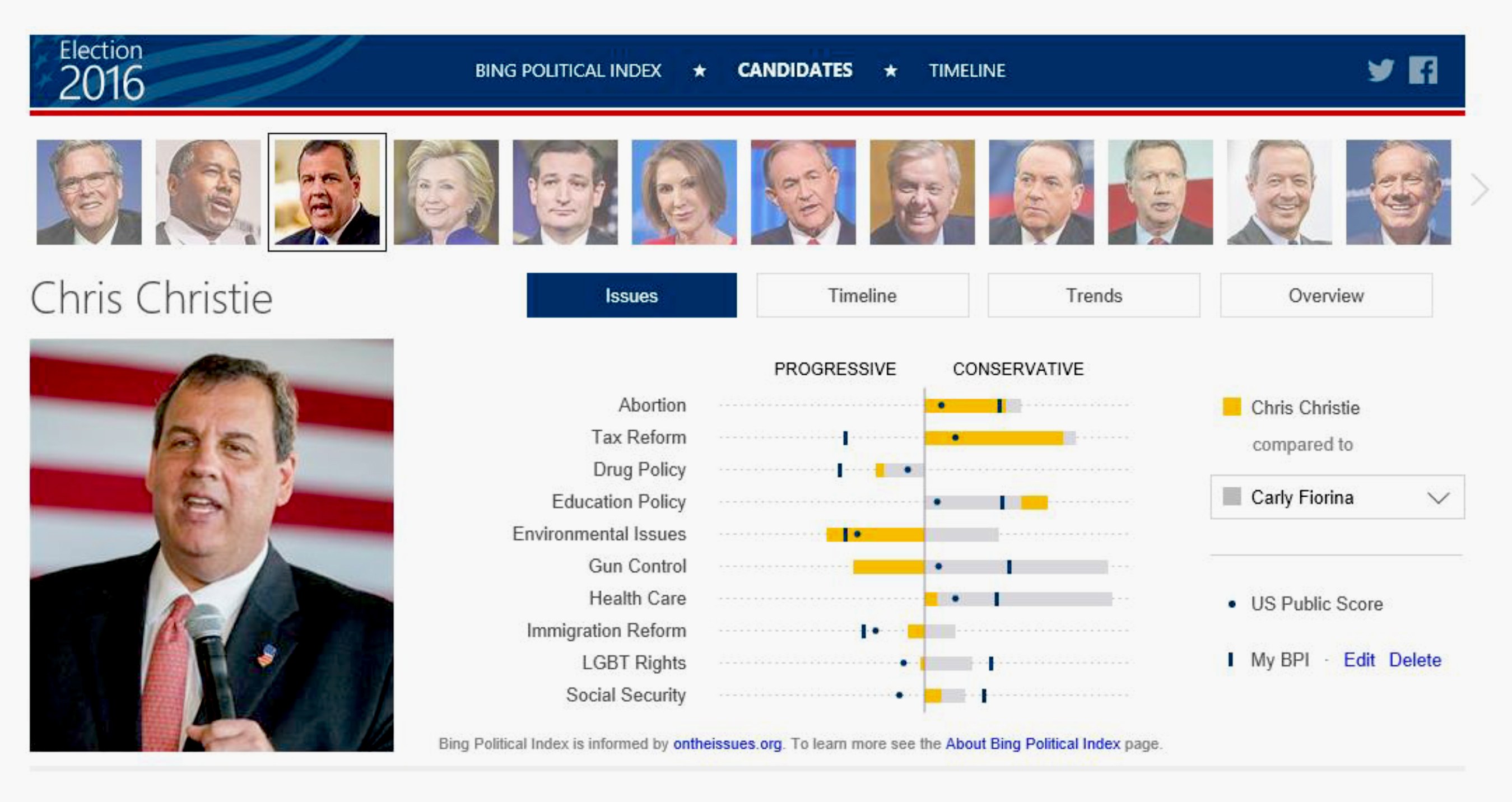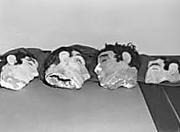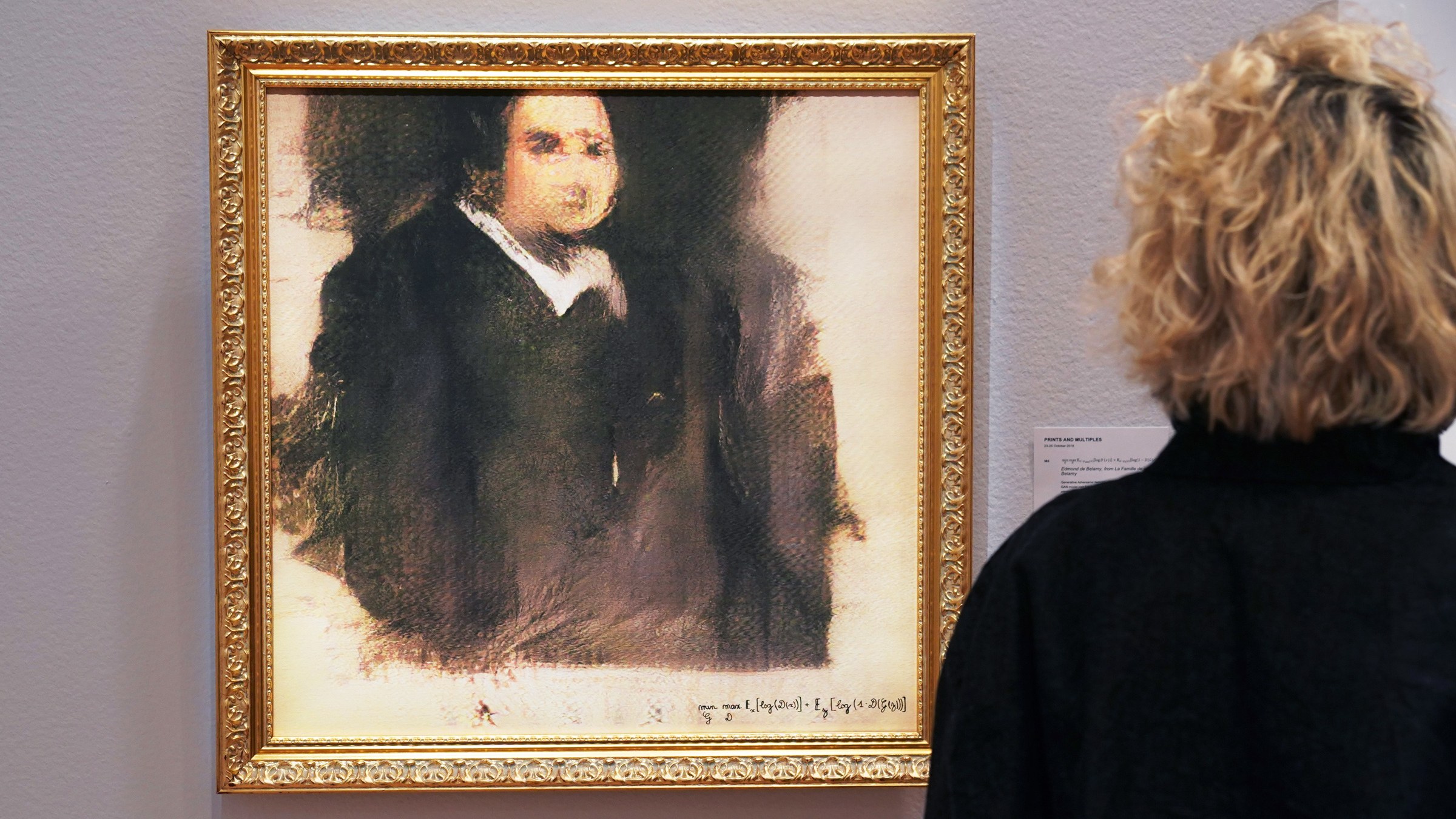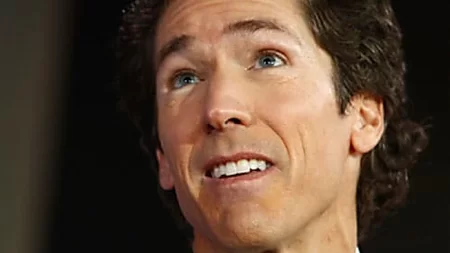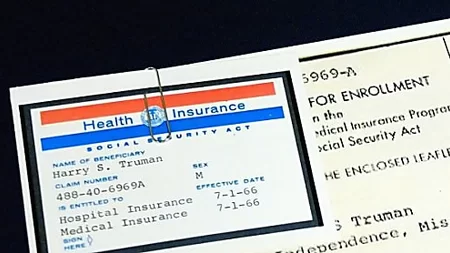Tech giants like Facebook, Google, and Twitter have become experts at helping presidential candidates target voters. Now, Microsoft is launching a new feature to help you figure out which one of those candidates stands for the same things you do.
Starting today, when you search anything election-related on Bing, the first thing you'll see is the new Bing Election Experience, a tool that makes it dead simple to figure out candidate positions on a variety of issues. It uses bar charts to show how conservative or progressive that candidate is about, say, environmental issues, and allows you to compare that to other candidates, to the US as a whole, and to your own beliefs. Meanwhile, users can also scroll through to view the top news stories and tweets of the day about a given candidate, as well as a 30-day view of their top news moments of the month.
"It’s really aimed at taking the cacophony of information out there around the election," says Ryan Gavin, Microsoft's general manager of search, "and really putting a simple, objective and clear view of where candidates stand on the issues."
To create the tool, Microsoft worked with the non-partisan group, OntheIssues.org, which scans news, press releases, public statements and more, to determine candidates' positions on topics like gun control, abortion, welfare, war, and other hot button issues. It then synthesizes that information to determine exactly how liberal, conservative, moderate, populist, or libertarian a given candidate is. It may not be an exact science, but it's the closest thing to unbiased information that exists on candidates, a fact that Gavin says was crucial to building the tool.
"As a search engine, our bread and butter is made on providing credible, objective answers and actions to the needs of our customers," says Gavin. "We didn't want to come in here with any type of bias or any type of point of view."
Microsoft is now using those scores to feed its so-called Bing Political Index, which it updates weekly, based on new information coming in from OntheIssues.org. But what's most interesting about the Index is that Microsoft is also using its own machine learning capabilities to determine how those scores compare to the US public at large. Microsoft scans search and social media data, and conducts sentiment analysis to figure out not just what the American public is talking about, but how they're talking about it.
It then generates a US Public score for each issue and plots that on the bar graph along with the candidates' scores. Users can also take a 10-question quiz about each of the issues, to figure out how their personal beliefs stack up.
According to Walter Sun, an applied scientist at Bing, the US public numbers tend to mirror other polls of the US population about the same issues. But the company doesn't actually factor those polls into its public score because, Sun says, Microsoft's prediction capabilities may be more accurate than polls.
That's hard to know, for sure, of course, but there's good reason for Sun to believe that. For years, Bing has been quietly—and successfully—using these methods to predict the results of things like sporting events and even elections. During the 2014 mid-term election, Bing accurately predicted 34 out of 35 Senate races, 419 of 435 House races, and 33 of 36 gubernatorial races across the country. Soon, the company will be integrating this year's prediction tool into the elections experience.
By now, of course, we know what you're thinking. No one uses Bing. But if you're looking for an unbiased guide to the massive array of candidates running for president this year, this new election tool could be a good reason to start.

